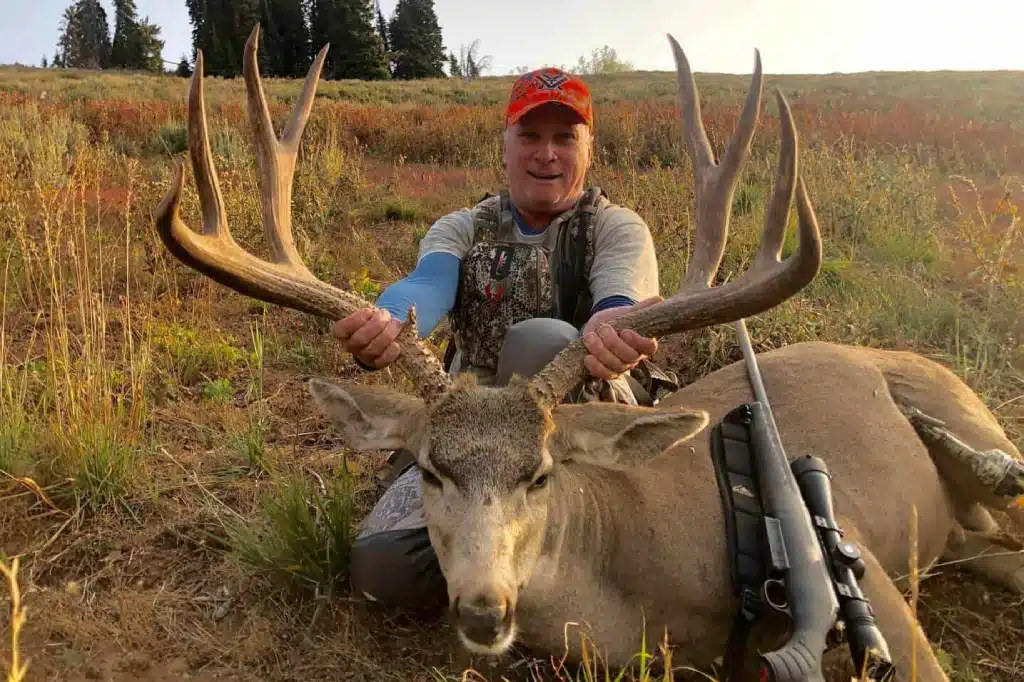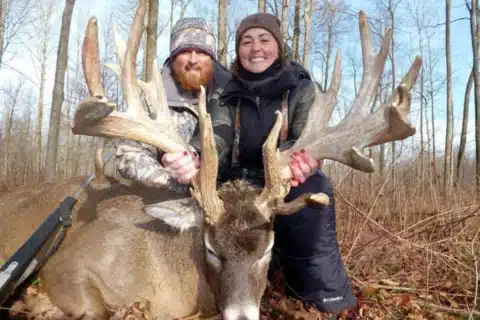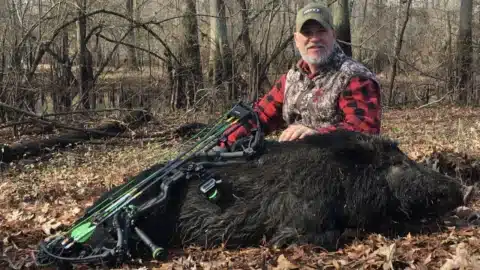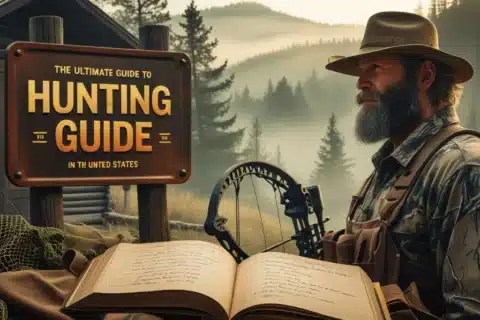Wyoming mule deer hunts are among the most popular big game hunting experiences in the United States. Known for its expansive landscapes, thriving mule deer populations, and diverse hunting opportunities, Wyoming attracts thousands of resident and non-resident hunters each year. Understanding the habitat, regulations, and hunting methods can greatly improve your chances of success.
This guide offers comprehensive information on Wyoming mule deer hunting, including prime hunting areas, seasons, licensing, hunting methods, and practical preparation tips.
📧 Email: info@hunt-nation.com
📞 Phone: +1 307-637-5495
Understanding Mule Deer in Wyoming
The mule deer is a species native to the western United States, recognized for its large ears, distinct black-tipped tail, and impressive antlers. Wyoming’s varied terrain, from alpine forests to sagebrush basins, provides a perfect environment for mule deer to thrive.
Key Facts:
- Scientific Name: Odocoileus hemionus
- Weight: Mature bucks weigh between 180-280 pounds.
- Antlers: Wide spreads often exceeding 24 inches.
Best Regions for Wyoming Mule Deer Hunts
Wyoming is divided into various hunting regions, each offering unique opportunities for mule deer hunters.
Region G
- Location: Western Wyoming
- Features: Rugged terrain in the Wyoming Range, known for producing large trophy mule deer.
- Hunting Style: Spot-and-stalk; requires physical endurance.
Region H
- Location: Southwestern Wyoming
- Attributes: Rolling hills and mountainous areas; excellent for mature bucks.
Bighorn Mountains
- Located in north-central Wyoming, offering accessible terrain for residents and visitors alike.
Wind River Range
- A remote, less crowded area with challenging but rewarding hunting opportunities.
Bridger-Teton National Forest
- This vast expanse of public land in western Wyoming supports healthy mule deer populations.
These regions are popular among hunters seeking Wyoming guided mule deer hunts or DIY public land hunting experiences.
Wyoming Mule Deer Hunting Seasons and Regulations
Hunting seasons vary based on the region, weapon choice, and type of license:
- Archery Season: Begins in early September.
- Rifle Season: Typically runs from late September to October.
- Muzzleloader Season: Available in select areas.
For the most accurate and updated season dates, consult the Wyoming Game and Fish Department (WGFD).
Hunting Licenses
- Resident and Non-Resident Licenses: Both are available, but non-residents must apply through a lottery system.
- Preference Points: Improve your chances of drawing a limited quota hunting license, particularly for high-demand regions like Region G and H.
📧 Email: info@hunt-nation.com
📞 Phone: +1 307-637-5495
Public vs. Private Land Mule Deer Hunting
Public Land
Wyoming boasts millions of acres of public land managed by federal agencies, including BLM and national forests. Public land hunts are favored by experienced hunters who enjoy the challenge of DIY Wyoming mule deer hunts.
Private Land
Private lands often provide managed habitats with less hunting pressure. Many hunters opt for Wyoming private land mule deer hunts through established outfitters who offer access, lodging, and guided support.
Both options have their merits, and the choice often depends on personal preference, budget, and hunting experience.
Wyoming Guided Mule Deer Hunts
Hiring a guide or outfitter enhances the hunting experience, particularly for non-residents unfamiliar with the terrain.
Benefits of Wyoming Guided Hunts:
- Expert knowledge of local deer patterns and habitats.
- Assistance with securing proper permits and tags.
- Logistic support including transportation, accommodations, and field dressing.
- Increased success rates for harvesting mature bucks.
Outfitters offer various packages, including archery mule deer hunts Wyoming, rifle hunts, and combination hunts that may include elk or antelope.
Preparing for a Successful Hunt
Preparation is key to maximizing success during your Wyoming mule deer hunting trip.
Physical Conditioning
Hunting in Wyoming often involves high altitudes and rough terrain. Strength and stamina are crucial, especially in mountainous regions.
Essential Gear
- Optics: High-quality binoculars and spotting scopes.
- Clothing: Layered clothing suitable for changing weather.
- Navigation: GPS devices or detailed topographic maps.
- Safety Equipment: First-aid kit and emergency supplies.
Scouting and Research
If planning a DIY hunt, pre-season scouting helps identify deer patterns and promising locations.
Common Questions About Wyoming Mule Deer Hunts
Q: When is the best time for mule deer hunting in Wyoming?
A: The peak hunting season is typically late September to mid-October, varying by region and weapon type.
Q: Are non-residents allowed to hunt mule deer in Wyoming?
A: Yes, through the lottery system managed by WGFD, non-residents can apply for licenses in various units.
Q: What is the difference between public and private land hunts?
A: Public land hunts offer greater freedom and challenge, while private land hunts provide exclusive access and guided services.
Q: What hunting methods are available?
A: Hunting methods include archery, rifle, and muzzleloader hunts, with designated seasons for each.
Conservation and Ethical Hunting
Wyoming’s wildlife management emphasizes sustainability. Hunters are encouraged to follow ethical practices such as:
- Adhering to hunting regulations and quotas.
- Practicing fair chase principles.
- Contributing to conservation through license fees that support wildlife programs.
Conclusion
Wyoming stands as a premier destination for mule deer hunting, offering diverse landscapes, quality deer populations, and well-regulated seasons. Whether opting for a guided Wyoming mule deer hunt or planning a DIY public land hunt, preparation, knowledge of the area, and adherence to ethical hunting practices are essential.
For updated regulations, application deadlines, and hunting tips, consult the Wyoming Game and Fish Department. Start planning your Wyoming mule deer hunt for 2025 to experience one of North America’s most rewarding big game adventures.





